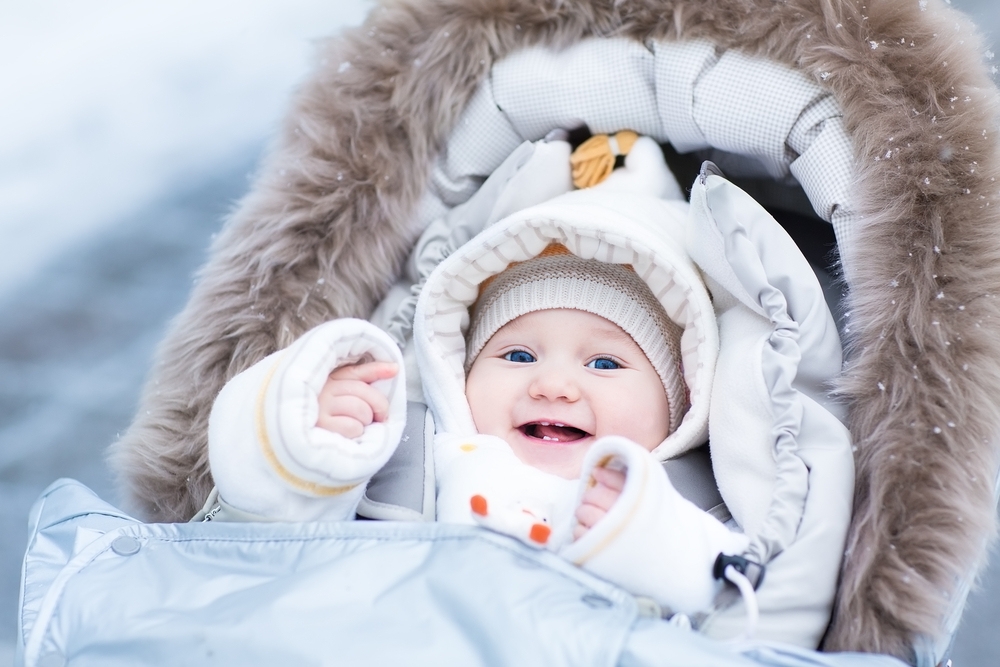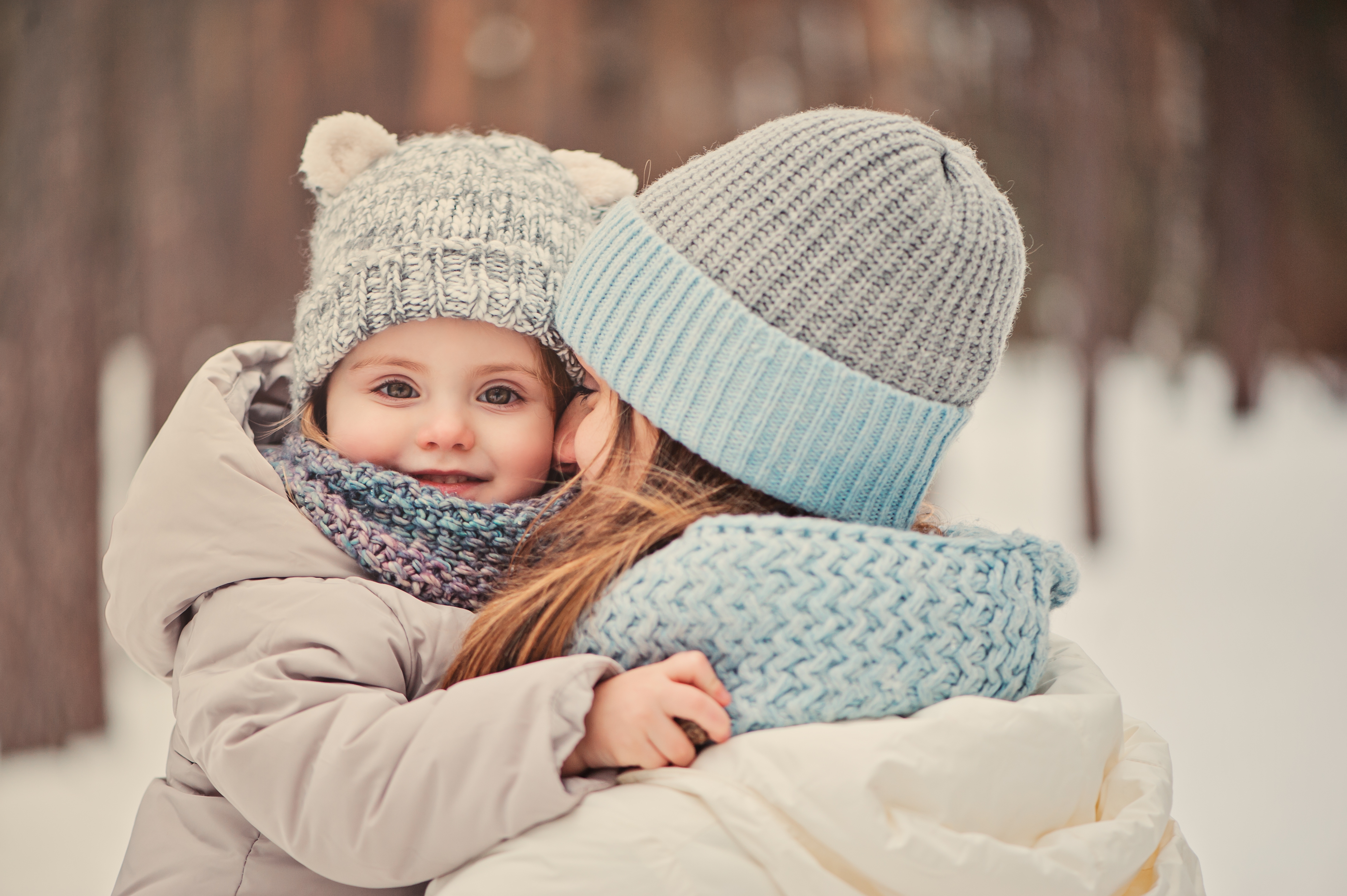
The weather is getting colder and colder, watching the children in the yard, step by step, being wrapped into cotton balls by hemp. At ordinary times they run happily, but now some even struggle to take a step, which really makes people laugh.
Do babies really need to wear so many clothes? In the spirit of convincing people with reason, I summed up this article, hoping to help mothers end their pain of [struggling in winter].
How much does the baby wear?
More than one parent has such doubts: some places say that dolls should wear one less than adults, while others say that they should wear one more. Which statement is right?
The clothes your baby wears should play such a role:
- In colder environment, clothes should prevent heat loss. In a hotter environment, clothes should be conducive to heat dissipation; When in a windy environment, clothes should have the function of windproof.
Specifically, it is necessary to judge whether the baby wears enough, whether it wears too much, and to discuss the scoring age.
1. Newborns within one month
Babies within one month still belong to [newborns] and have poor body temperature regulation ability. As long as the ambient temperature is lower than the comfortable 24 ~ 26 degrees Celsius, it is necessary to wear more.
A simple way is to wear one more layer than adults.
2. Babies over one month old
As for healthy babies over a month old, it depends on two words-touching sweat.
The place to touch sweat is exquisite: not palm, not forehead, but baby’s back.
Adults use warm hands to probe down the collar of children’s clothes-
- Cold, on behalf of wearing a little less; Warm, on behalf of just; Sweating or wet means wearing too much.
By the way, if it feels cold, it means that the clothes you are wearing are not warm enough. But don’t add clothes blindly at this time. Sometimes, it may not be that you are wearing less, but that you are not wearing the right clothes.
Do you want to touch your hands and feet? Yes, too. The temperature of the baby’s hands and feet should be slightly lower than that of the chest, but it is not cold.

How much should the baby wear?
1. Babies within one month old
As we said earlier, newborns have poor thermoregulation ability, so AAP of the American Academy of Pediatrics suggests this:
Unless the temperature is particularly high (24) degrees or more, newborns have to wear several layers of clothing to keep warm.
Generally, it is best to put on a close-fitting small coat, bread and diapers for the baby first, then put on a pajamas or blouse, and finally wrap the whole body with a baby blanket.
If the child is premature, another layer of clothes may be added until his weight reaches the level of a full-term baby and his body can better adapt to temperature changes.
A very practical reference method is that at the same temperature, the baby’s clothes should be one layer thicker than the clothes that adults feel comfortable with.
When going out, the baby can be appropriately thickened with close-fitting clothes, and another one-piece cotton-padded jacket or one-piece down jacket can be added outside.
Because there is still my mother’s arms, it is estimated that I will not be exposed to the outside for a long time. There is really no need to wrap a thick quilt into a ball.
Wear it like above, and when you go back indoors, it is also convenient to wear and take off your clothes, which can save a lot of things for novice parents.
2. Babies under one year old
Because I can’t go yet, I have to hug everywhere. Therefore, for babies at this stage, jumpsuit is still the first choice.
At this time, the method of touching sweat can be used to preliminarily judge whether the clothes the baby wears are suitable.
However, once you find that you are wearing less clothes, don’t add clothes in a hurry. You can warm your baby with an adult’s arms, or feed your baby something to eat. After your body temperature returns to normal, you can add clothes appropriately.
When you go out, most babies need to hold them or push them in the cradle car. Therefore, when taking your baby out, you can also add a conjoined cotton-padded jacket or down jacket.
3. One to two years of age
After the baby can walk independently, mothers can gradually try to wear split cotton underwear for the baby.
As most of the time when going out also need to hold, it is recommended to choose braces to wear cotton trousers or down trousers. Cotton trousers and outer trousers are integrated, convenient to wear and take off, and can well protect the belly, killing two birds with one stone.
4. Over 2 years of age
Babies over two years old can basically run, jump and jump.
At this time, the baby can participate in more and more activities, sweat profusely when playing, and sit for half an hour when playing with building blocks. It is as quiet as a virgin and moves like a rabbit.
Mothers began to have a headache and match clothes-often wearing clothes of various thicknesses, wearing thin clothes and thick clothes for a while, which made them miserable.
Here, Ding Ma introduces to you a [onion-style dressing method] that is highly respected by foreign mothers.
As the name implies, it is like onions, wrapped layer by layer-however, it is not as many layers as onions, from inside to outside, only three layers are needed:
- Inner layer: soft, breathable, sweat-absorbing, close-fitting pure cotton clothes and trousers; Middle layer: warm keeping is the main material, cotton, wool and velvet can be used, and natural and environment-friendly materials that do not generate static electricity are selected. Specifically, cardigan, vests, sweaters, dresses, warm pants, leggings, pantyhose, etc. Outer layer: windproof and waterproof, the thickness depends on the specific temperature. Cotton-padded jacket, down jacket, trench coat, etc.
In addition to these three layers, waistcoats of various thicknesses are also a magic weapon.
When struggling with [whether to wear the third layer], the waistcoat can be sent on the stage. This shape of clothing can not only keep warm for the body part that is afraid of catching cold, but also allow children to move freely and not so heavy.
Moreover, after matching, it feels very fashionable!
Please avoid the following three accessories
After saying [how to wear], let’s talk about [not wearing what].
STEP 1 Don’t wear clothes with ropes
Since June 1, 2016, the “Technical Specifications for Safety of Textile Products for Infants and Children” published by the National Standardization Administration Committee has been formally implemented, explicitly requiring that no rope belts are allowed on the head and neck of clothing for infants and children under 7 years old.
Why is this happening? Because if the knot of the head and neck is pulled quickly and vigorously… this is a fatal thing.
However, there are inevitably clothes with ropes on the market. The baby is short and probably has longer ropes than people. If the rope is twisted into bicycle wheels, elevator handrails or clamped in car doors, the consequences will be unimaginable.
Step 2 Avoid long scarves
Like hoodies with ropes, long scarves are very dangerous to babies, especially those of parents who like to ride bicycles or electric cars.
Long scarves are easily scattered and involved in wheels, which may kill children. The matching of escalators and long scarves in shopping malls will also bring danger to children.
Moreover, even if the above two dangers are avoided, long scarves are not recommended for children-children like to run and jump, like to play with each other, and grab children’s necks in an unguarded moment.
It is recommended to use short hole-digging scarves or collars to keep your children warm. They are simple, portable and safe!
Step 3: Don’t wear thick socks
The socks are too thick and the baby easily feels uncomfortable. Wear pure cotton socks with good fit for the child.
Even in cold winter, don’t give children thick socks, but try to adjust the thickness of shoes to keep out the cold.
This is because thick socks are not effective in absorbing sweat, while children’s feet are easy to sweat. Not perspiring in time will increase the risk of some skin diseases, and chilblain is also easy to cause in cold weather.
